After the rain of criticism for his style of management of the National Team, in addition to the player list that generated too much debate within the Spanish population, Luis Enrique and his united group showed their World Cup rivals that they are ready for battle, with youth, experience and a lot of enthusiasm, the team of the former manager of Barcelona was able to overwhelm Costa Rica 7-0, their largest result in the history of the World Cup.
On the other hand, Costa Rica, with their low block that gave it solidity and a lot of coordination in the preparatory matches prior to the World Cup, where they grabbed victories against teams like the United States at the World Cup qualifications, showed a very broad fragility, probably the weakest and most breakable block of the entire tournament, which so far has had many solid teams, that have kept clean sheets or have put a lot of stress on teams that seek to be more mobile with the ball and have it longer than they do. However, the CONCACAF team was the opposite and Spain knocked it down very easily.
The match took place, for the most part, in Costa Rica’s third, with Spain that dominated possession with 82%, making 976 passes with an overall accuracy of 94% inside those passes, while Luis Fernando Suárez’s side, only executed 165 passes, which 71% of the times reached their destination. A fairly large statistical difference that only indicates the Spanish dominance, which, as many coaches like to say, defended themselves in the best way, having the ball.
In this tactical analysis, we dive into the tactics of both teams and see how Luis Enrique’s Spain not only ended the game with a victory against Costa Rica, but they were by large, the most comfortable team in the tournament in terms of what they were doing with the ball, and obviously as well as scoring goals because of the seven and how they were brilliantly scored.
Lineups
Luis Enrique decided on his traditional 4-3-3 that he has applied to all the teams he has been to. Athletic Bilbao‘s Unai Simón was chosen in goal, with César Azpilicueta as the right-back in a deeper role, accompanied by Jordi Alba on the left lane, and Aymeric Laporte with Rodri as centre-backs. Sergio Busquets, who was in his prime back again, commanded a full midfield of Barcelona players, along with Gavi and Pedri.
In order to finish the attack, Ferrán Torres played on the right wing, Marco Asensio as a false 9 and Dani Olmo on the left, who was much more mobile from the outside to inside.
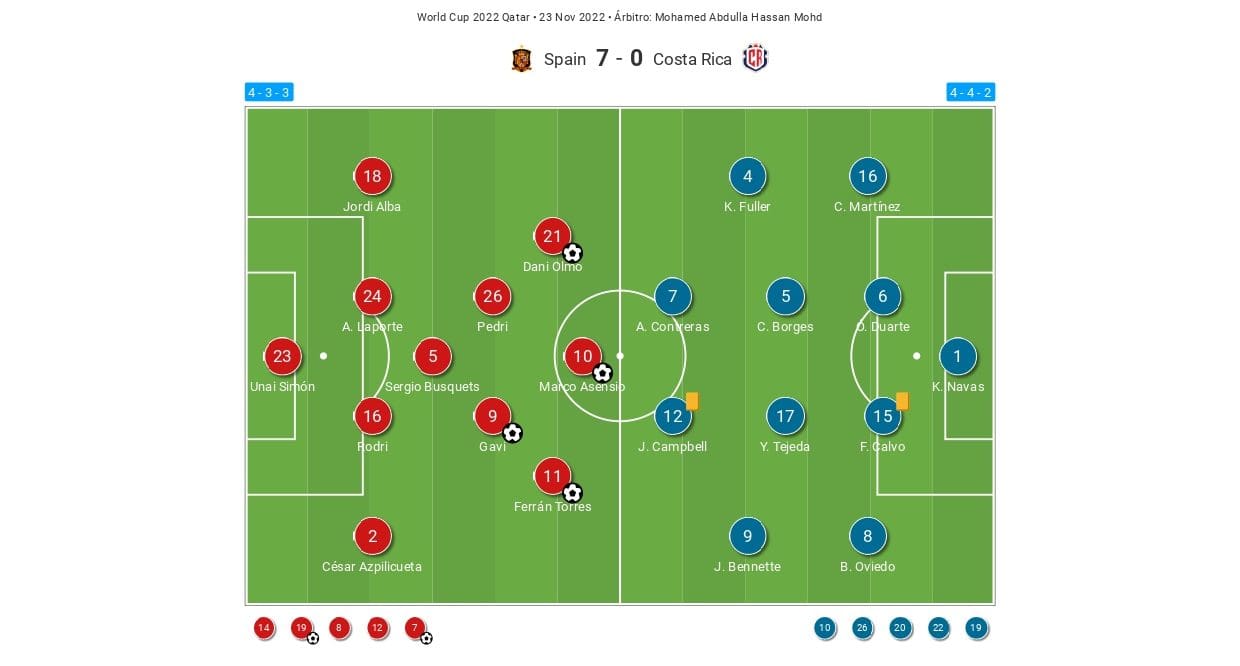
Costa Rica also decided on its traditional 4-4-2 formation that the Colombian coach, Luis Fernando Suárez, has accommodated in his team. Keylor Navas, the captain and inexhaustible player of the team, was the goalkeeper once again, with a back-four in defence with Bryan Oviedo and Carlos Martínez as the full-backs, and the tough Francisco Calvo and Oscar Duarte in the centre. The midfield formed a double pivot with Celso Borges and Yeltsin Tejeda, with fast and dizzying wide players like Keysher Fuller and Jewison Bennette. Completing the attack was the young Anthony Contreras and the fast and former Arsenal player Joel Campbell.
Busquets beating the blocks and quick combinations through the zones
As soon as the referee gave the initial whistle of the match, Spain found the ball and never released it, and it was not passing it from side to side, but also finding easily the spaces to circulate the ball between Costa Rica’s block that started in the middle, sometimes they exchanged it to a high one in the first moments of the game and in each shift they made in their way of defending, Spain did a lot of damage.
One of the ways in which Luis Enrique’s men evaded the pressure from Costa Rica when at certain times it was high, was through the use of the goalkeeper, Unai Simón, who with his ball skills everything was easier. After restarting attacks, his centre-backs opened to their full width and the goalkeeper entered the line as the centre-back through the middle, in order to generate numerical superiority against the two rival attackers, but also to stretch them. With the pass made to one of the central defenders, the idea was for Busquets to receive the ball instantly and he could because of this wide shape that created spaces between the markers.
This image shows it perfectly: Costa Rica raised their lines to such an extent that they placed two wide players forward pressing the wings, a midfielder going man-on-man with Busquets and further back another with Pedri. Given that Spain’s positioning was very wide when the pass was played from the goalkeeper to the left centre-defender Laporte, one of the forwards, in this case, Anthony Contreras had to jump in search of the ball, and Joel Campbell was attentive to the pass towards Laporte’s natural profile. However, space was created and Busquets received with time, and after controlling the ball, he performed a splendid turn that put Spain in the last third in a matter of seconds.
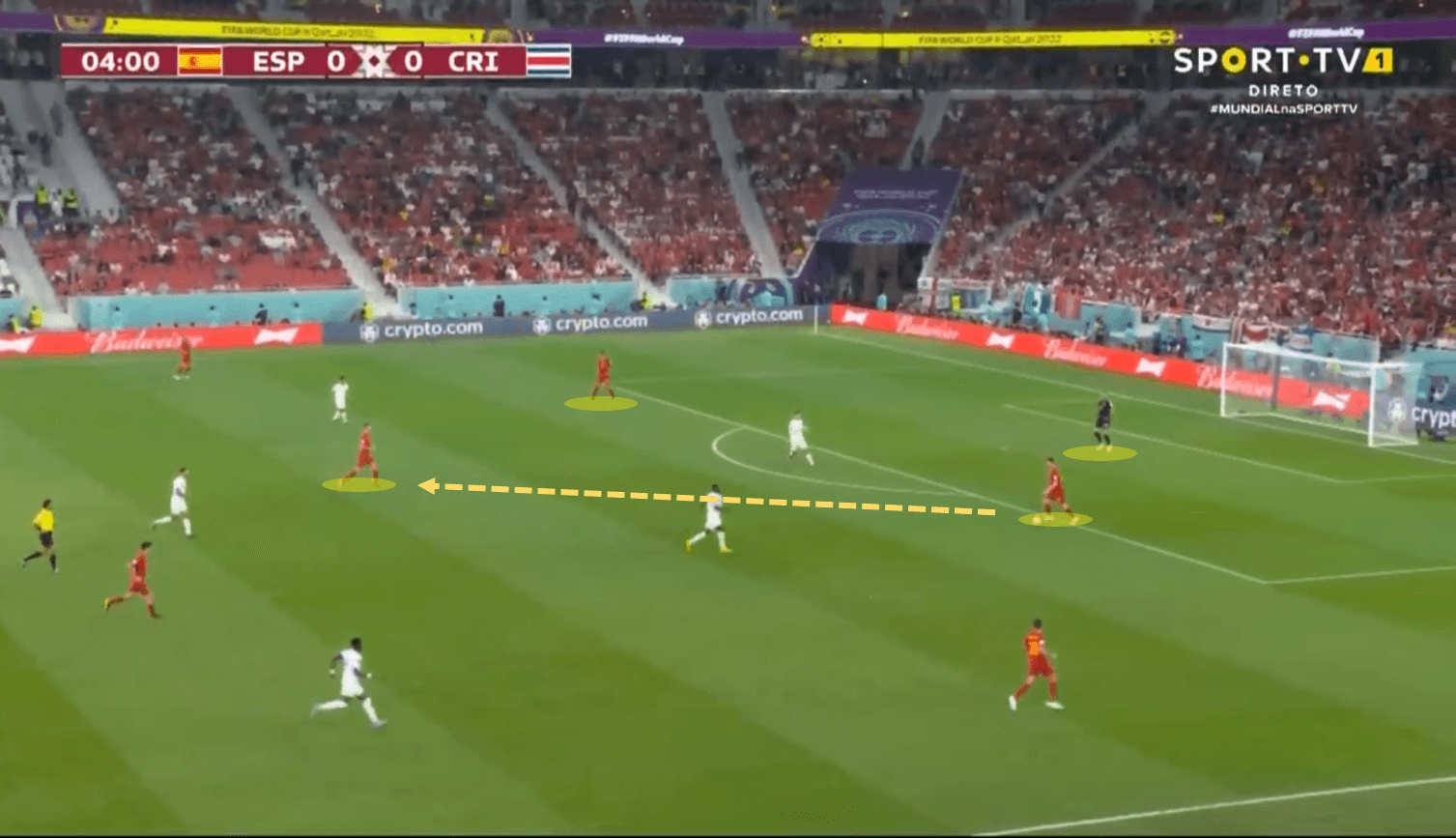
One of the most common movements for Spain to progress on the pitch was thanks to Pedri. However, everything had a trigger that had to be pulled at a certain moment. While the centre-backs of Spain began the attack, when the ball was played to Jordi Alba who was positioning himself well on the outside, Pedri made decoy runs to attract one of the Costa Rica midfielders, leaving Sergio Busquets free behind him who he could receive early and raise his head to combine with nearby players with one-two link-ups as well as switch the game to the side.
Normally this action was carried out on the left, where Dani Olmo delayed his position, and Jordi Alba played higher and more open than, for example, César Azpilicueta on the right, who had a role as a deeper and more defensive full-back. This was not an impediment for the exercise to be played out over the right flank, since if the ball moved to that side, the midfielder, in this case, Gavi, was the one who made the run. They were all decoys so that one of the best possession managers in the world, Busquets, could appear. If he had control of the game, Spain gained a lot of ground and vision as well as acceleration with the ball.
The image shows how this movement was performed. Jordi Alba received and released Dani Olmo, so Pedri understood that he had to run between the lines to attract his marker. Olmo quickly returned the ball to Alba who found Busquets with an inside pass. The thing with these movements to open spaces is that they must be executed out at high speed with players with good receptions who can turn the vision of the game in seconds.
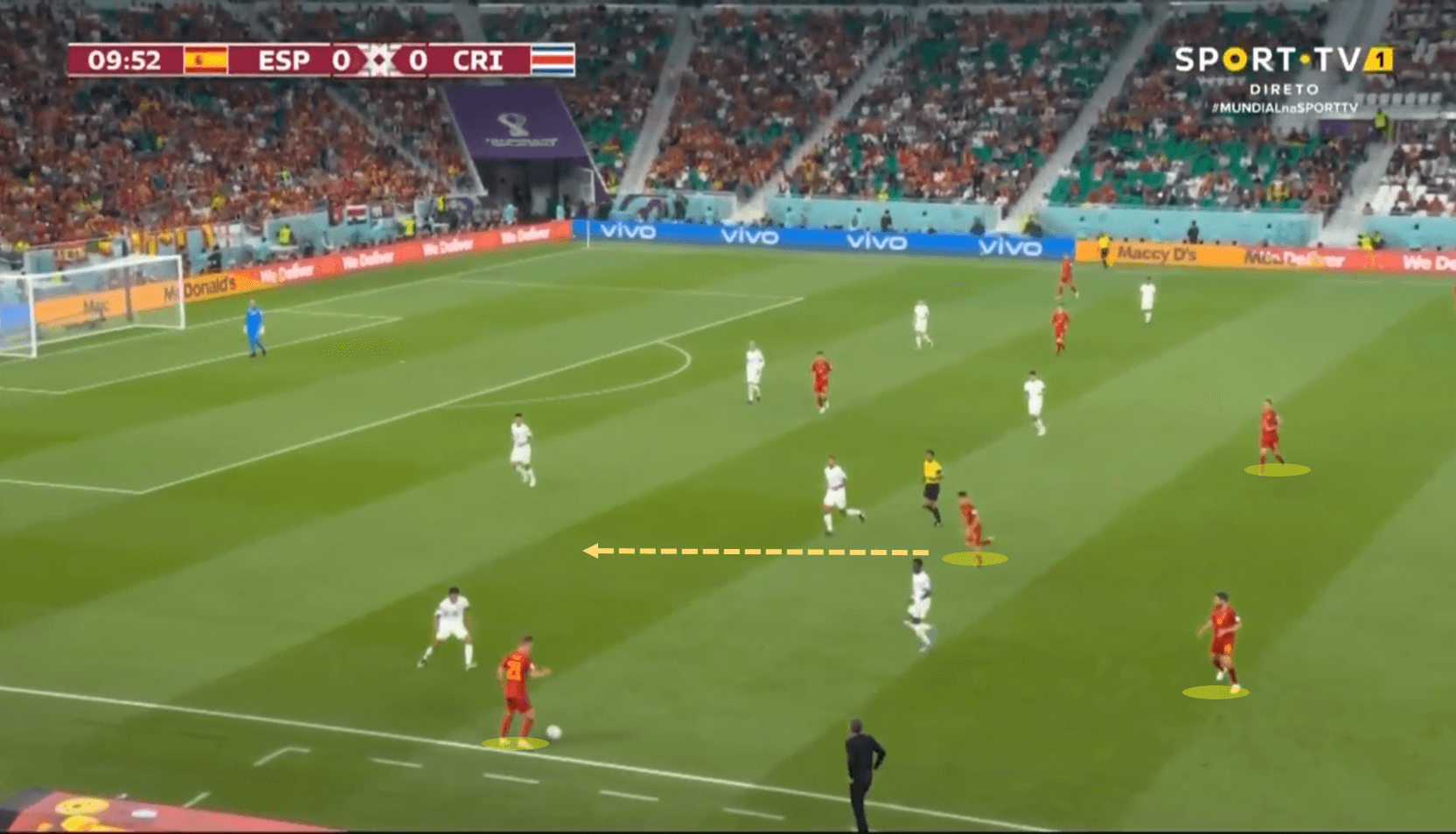
The narrative of the match in the attacking third for Spain from the beginning and after the first goal was the combinations in half-spaces and in central areas, on the edge of the box, where many rotations occurred. If Asensio left his place, it was occupied by Pedri or Gavi, depending on which channel he moved into. The wingers constantly went out or in to make link-up plays and receive goal passes behind the full-backs or centre-backs.
One of the lethal things that brought down Costa Rica was that they could not contain the speed of the ball circulation of Spain and, above all, the change of direction of the game that they constantly made, not only with long balls to wingers but also with oriented controls and movements into space.
Some of them were executed in this way, where Busquets and Pedri became increasingly important and were key within their roles. One as the first pass and another activating between the lines where he threatened the Costa Rican team with his receptions. When the ball was released from the right towards Busquets, Pedri approached the box in half-spaces, taking areas that Asensio released.
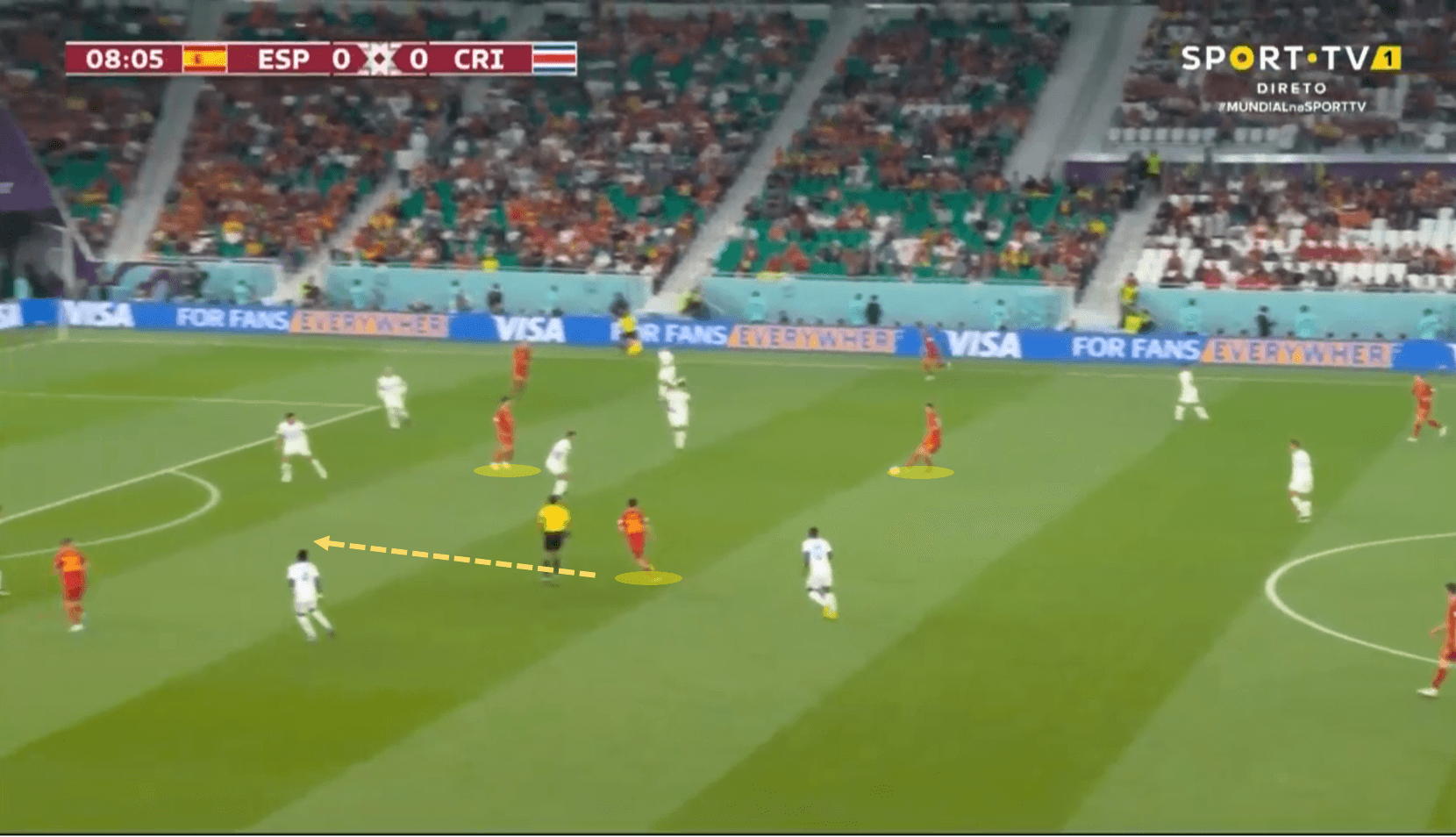
Another of the ways was the typical ones from the pivot, which was Busquets, who received the ball and oriented the entire game towards the side of Jordi Alba who, of course, as his profile indicates, was more offensive and always sought to create overlapping runs to send dangerous crosses to the box.These types of turns from Busquets or Pedri at some moments towards Jordi Alba were the culprit of Spain’s second goal of the match, where the full-back raised his position much more and finally appeared almost on the last line of the pitch, where he was able to assist towards the centre of the area where Marco Asensio arrived, instead of being more positional, managed to connect from behind thanks to his functional role.
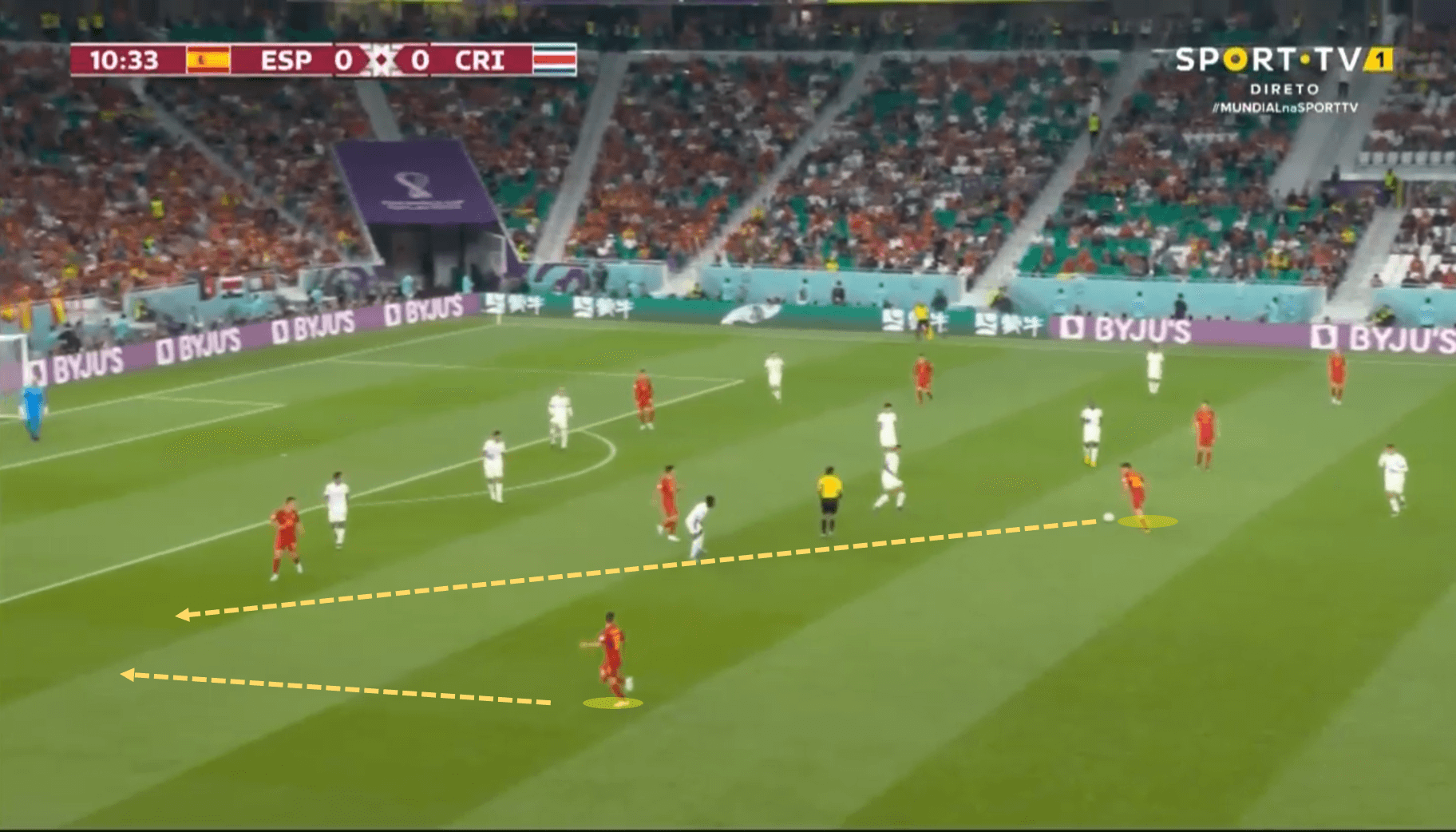
Spain tried to generate triangulations and even diamonds from the outside to the inside and vice versa to break the last defensive line of Costa Rica and thus plant themselves in the box with fast link-up plays of one or two touches and a lot of exchanges and rotations of channels between the players that added fluidity and mobility to confuse Costa Rica in their defensive approach.
The left flank was the most used by Luis Enrique’s side in the match, thanks to the associative facet of Pedri and Olmo on that side, as well as the overlapping and underlapping runs by Jordi Alba who understood the circulation within these diamonds or triangles very well, or Asensio’s movements outward as a false 9.
This was the type of diamond they created on the outside to overload and then play on the inside. The build-up before the penalty that Ferrán Torres executed and scored Spain’s third goal in the match was thanks to this, something that had usually been repeated throughout the match. Jordi Alba centralized more and left the full width to Olmo, with Pedri as support deep and Asensio as the axis on the edge of the box.
After Alba released the pass inside with Asensio, he played outside with Olmo, who found Pedri behind while the left-back was already making the run forward to push the Costa Rican line into the box, where he received and was laid down, thus generating the penalty. These types of link-up plays close to the box were always executed with first-time precision, which was too difficult for Suárez’s men to endure, who were at a different speed and pace during the match.
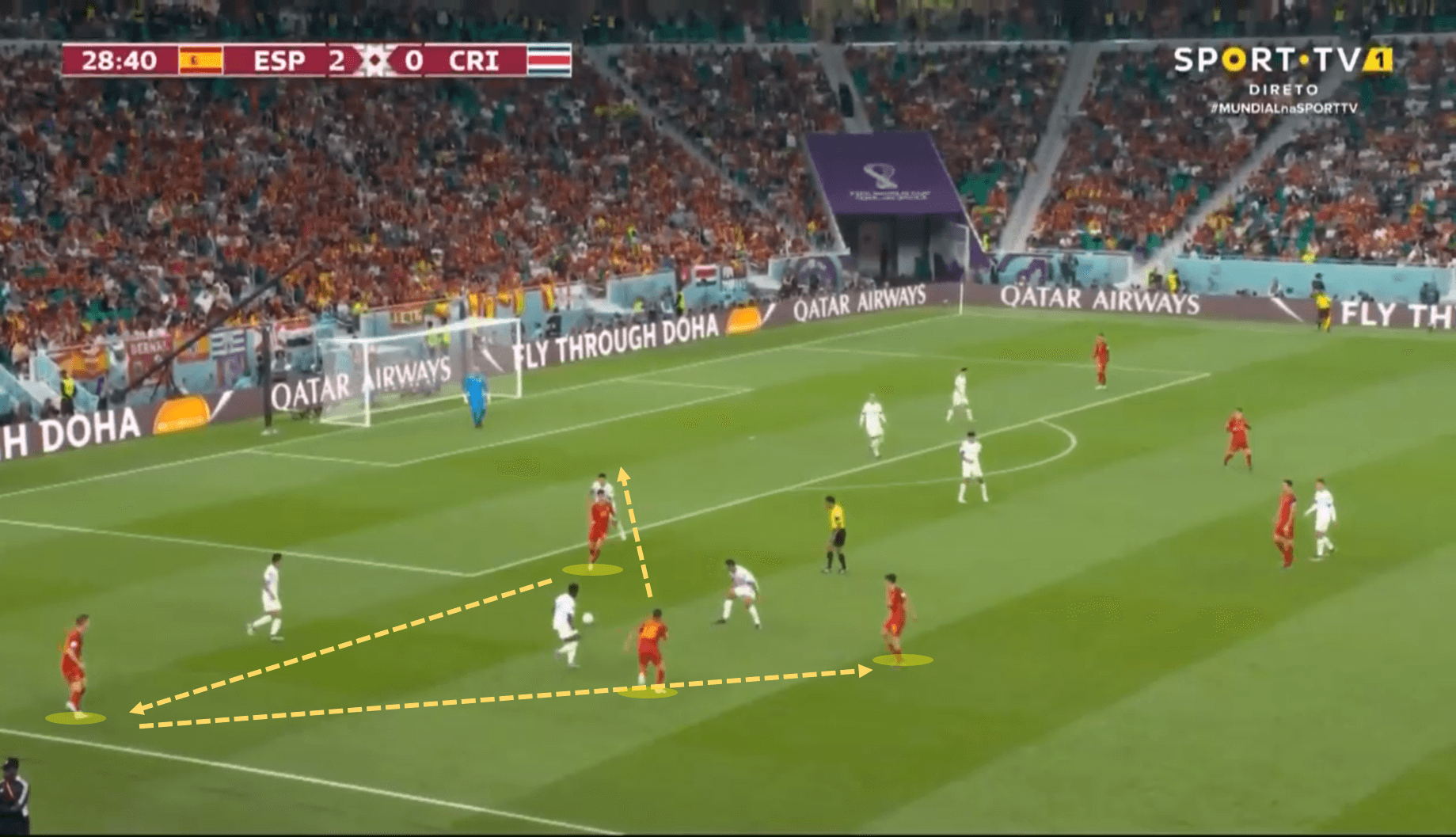
With the substitutions in the second half, Luis Enrique looked for more activity on the right flank, with Gavi being the most used player in circulation, and with a more aggressive profile to attack spaces and the box, he contributed a lot and even an elegant goal with the outside-of-his-foot technique. In addition, the subsequent presence of Alex Balde and Nico Williams gave Spain a lot of dribbling and explosiveness, which in this case sought to play through the other side of the pitch.
One of the movements that Spain sought to execute in the last third during the second half was with the winger in a further back position, attracting one of Costa Rica’s markers, in order to create space on the sides that was attacked by Gavi, which he did constantly and very well executed. However, the rotations continued without stopping, as the picture below shows Ferrán Torres starting the build-up at that positioning, but after releasing, he stepped on the half-spaces of the box where he received and scored the fourth goal for Spain.
However, the central combinations continued to occur, the rapid circulation and the heap of automatisms that Luis Enrique has worked on in his complete squad, since after the substitutions they continued to play at the same speed, intention and movements, making it known that each one of the elements of the team knows exactly what to do when they enter the game-pitch, making the Spanish performance more fearful as everyone is fully committed with the idea.
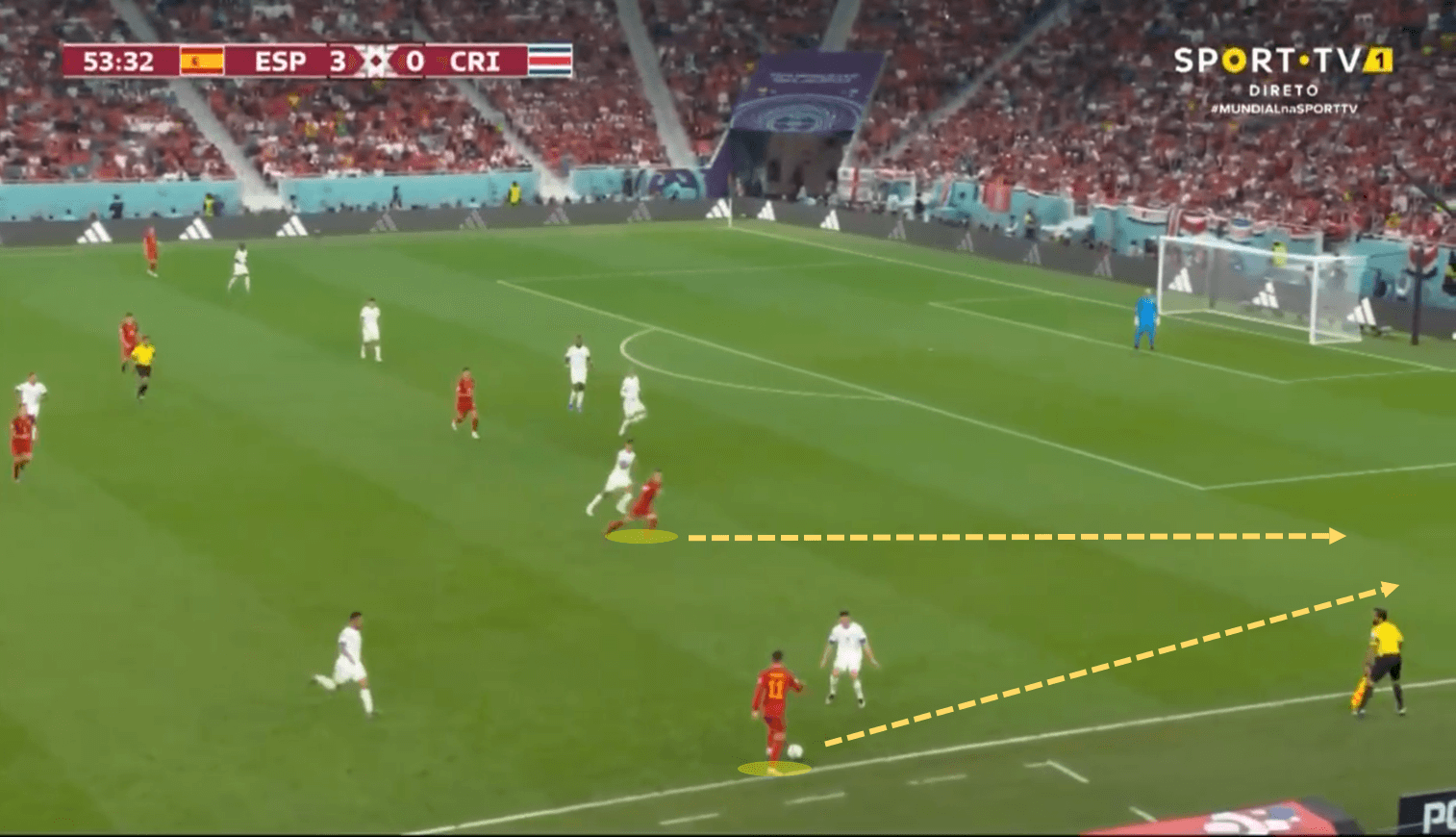
Conclusion
Spain was even a team that pressed high throughout the match. Even when winning 7-0, they were going to press much higher in Costa Rica’s own third. However, there were so few moments when they had to demonstrate their defensive idea, since possession of the ball gave them total calm and tranquillity since Costa Rica never threatened to win the ball from them at any time.
In this analysis, the incredible skills with the ball of Spain are demonstrated who once again became one of the favourites to win the tournament and a lot is due to the world-class coach they have in Luis Enrique.

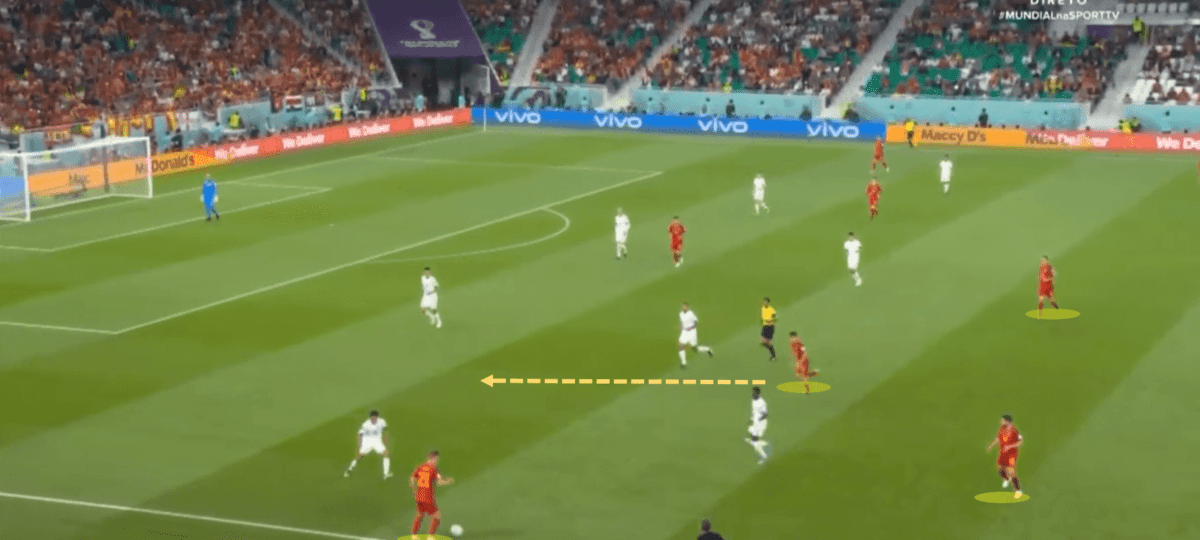


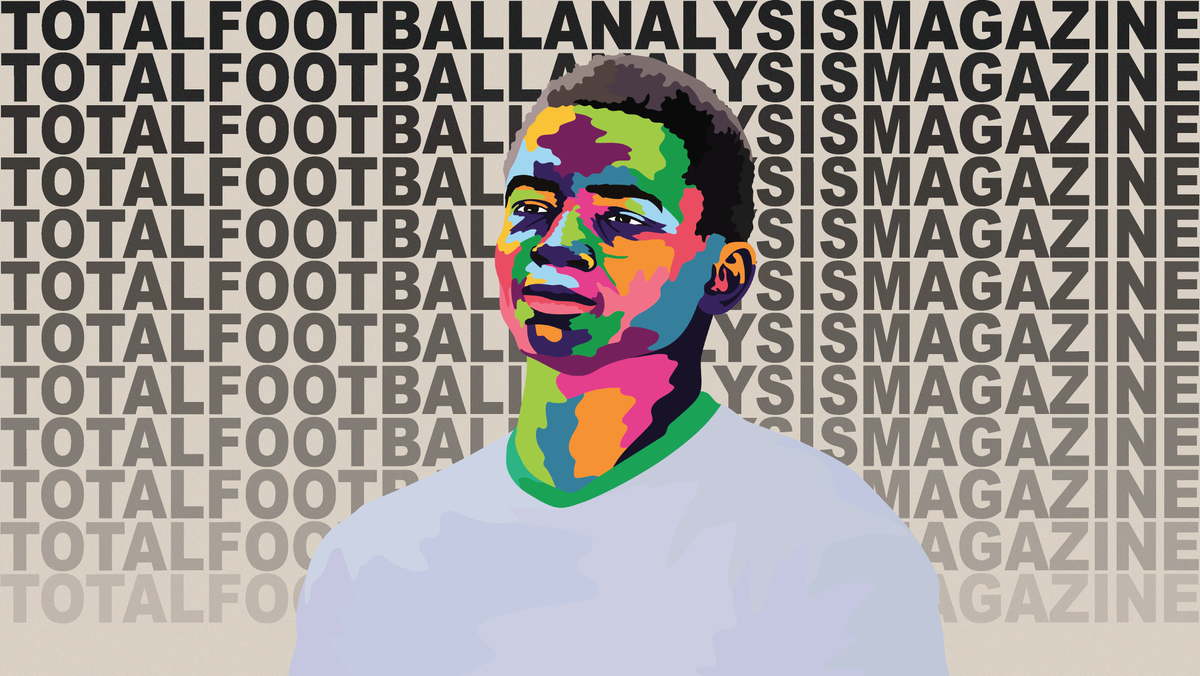

Comments